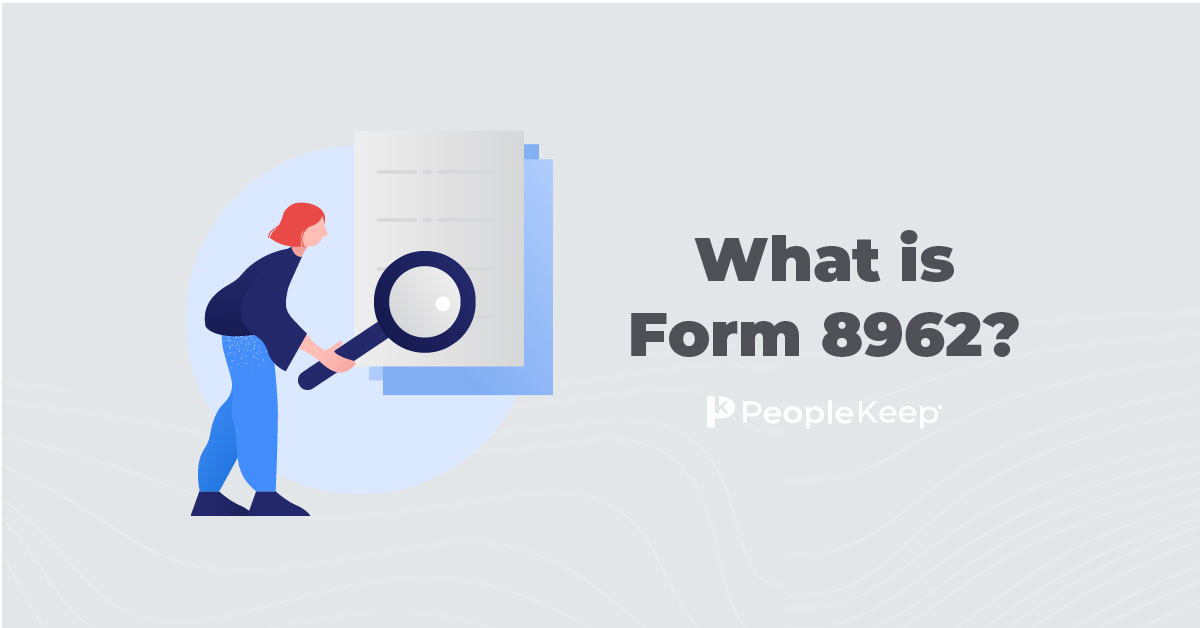The Affordable Care Act tax forms you need to fill out
By Elizabeth Walker on August 30, 2023 at 2:19 PM
The federal government enacted the Affordable Care Act (ACA) in 2010 to make health insurance more cost-effective and accessible for Americans. The ACA applies to citizens of all states, and individuals and their families in every state have the ability to enroll in a Marketplace policy that offers essential health coverage.
In addition to more accessible health insurance, the ACA also brought with it more compliance considerations for both employers and individuals, including reporting requirements. But how do you know which forms to file?While you should consult a tax professional if you have specific questions, this blog will walk you through the IRS forms employers and individual taxpayers may need to file under the ACA.
Learn how the ACA impacts applicable large employers (ALEs) in our complete guide
For employers
Depending on the size of your company, you’ll be responsible for submitting different tax and reporting documents relating to the ACA. Below, we’ll review the forms you must submit if you’re a small business owner or applicable large employer (ALE).
1. Form 8941: Small business health care tax credit
If you operate a small business or non-profit, you may qualify for the small business health care tax credit.
To qualify for the tax credit, you must meet all of the following requirements:
- You employ fewer than 25 full-time equivalent (FTE) employees
- Your average annual salary per employee is roughly $56,000 or less
- You pay at least 50% of your full-time employees' health insurance premiums
- You provide all your full-time employees with Small Business Health Options Program (SHOP) coverage1
If you qualify and want to claim your tax credit, you must file Form 8941. This form helps you calculate any credits you’re eligible to receive based on your healthcare expenses2. The credit is only available for eligible employers for two consecutive tax years.
You'll also need to file Form 3800 along with Form 8941. Employers use Form 3800 to calculate all available tax credits they’re eligible to receive—including credits for health insurance premiums3—that accumulate into a general business credit. You should include your small business health care tax credit from Form 8941 on Form 3800 along with any other business credits you claim.
Employers must file Forms 8941 and 3800 with their annual income taxes by the standard mid-April deadline unless they have an extension.
2. Form 1095-C: Employer-provided health coverage
The 1095-C form includes information about whether an employer offered an employee health coverage during the previous tax year, if the employee enrolled, and for how many months the employee had access to coverage4. Only ALEs must provide the form.
If you’re an ALE offering a self-insured health plan like an individual coverage health reimbursement arrangement (ICHRA), you will fill out parts I, II, and III of Form 1095-C. However, if you’re a small employer that offers a self-insured plan like an ICHRA and isn’t required to file Form 1095-C, you must supply Form 1095-B.
ALEs must give Form 1095-C to all full-time employees who have worked for their company for at least one month of the previous calendar year. ALEs include information for the entire year for each employee.
Employers must send Form 1095-C to eligible employees by January 31 of the following year. Once employees receive their forms, they simply need to state on their tax return if they received employer-sponsored coverage and how long it covered them if they enrolled. They can keep the form for reference or use it to help them determine premium tax credit (PTC) eligibility.
If you’re an employer that’s ready to send your 1095-C forms to the IRS, include Form 1094-C as well5. Form 1094-C is the transmittal document for Form 1095-C. It provides a summary of all the 1095-C forms you’re submitting that tax year so the IRS can decide if you owe any penalties or determine if any of your employees are PTC eligible.
Generally, the deadline to file 1094-C and 1095-C forms to the IRS is February 28 of the following calendar year if you’re filing paper forms or March 31 if you’re filing electronically. But, employers must combine all their tax documents starting in 2024. So, all employers filing ten or more aggregate returns must file electronically6.
If you don’t meet the deadlines (and aren’t granted an extension), you may be subject to penalties from the IRS. You can work with a tax preparer if you need help gathering the proper information for prompt filing.
For individuals
Individuals have different tax filing responsibilities regarding the ACA. Most forms individuals receive don’t need to accompany their federal tax returns. But others are important to determining PTC eligibility each year. We’ll go over these forms and more details in the sections below.
1. Form 1095-A: Health Insurance Marketplace Statement
While this isn’t a form you need to file, you may receive one during tax season. If you enrolled in a qualified health plan through a public health insurance exchange, you’ll receive Form 1095-A. This form7 is simply a statement indicating that you, as an individual, received a health insurance plan through an ACA marketplace7. It also includes the plan’s effective date, monthly premium amounts, and any advanced premium tax credits (APTC) or other cost-reduction subsidies you received.
You can keep the Health Insurance Marketplace Statement as part of your tax records. You don’t have to submit it along with your income tax return, but you may have to indicate on your return that you received it. If you didn’t receive Form 1095-A, contact the marketplace where you enrolled in health insurance coverage.
2. Form 1095-B: Minimum essential coverage (MEC)
If you had minimum essential coverage (MEC) through a federal program like Medicare, Medicaid, or the Children’s Health Insurance Program (CHIP) or had a health plan through your employer, you may receive Form 1095-B.
If you had coverage from an employer offering a fully insured plan through an insurance carrier the insurance provider will send this form8 to you. The form includes details like the health plan type, effective date, months of coverage, insurance company, and who the policy covered, including any dependents.
In the past, individuals without health coverage had to pay a shared responsibility penalty as part of the individual mandate. But the Tax Cuts and Jobs Act (TCJA) ended the penalty in 20199.
Therefore, similar to Form 1095-A, you just need to indicate on your tax return if you received Form 1095-B and include its information. You don’t have to submit the entire document and won’t be subject to a tax penalty if you didn’t have coverage during the previous year.
Most individuals will receive either Form 1095-A, 1095-B, or 1095-C, depending on where they got their health insurance coverage. If you have coverage from more than one provider, you may even receive more than one of these forms.
3. Form 8962: Premium tax credits (PTCs)
The ACA created PTCs for eligible individuals and families to get discounts on their health insurance premiums. During open enrollment, individuals who enroll in a health plan on a state-based or federal Health Insurance Marketplace can apply for a PTC. If they qualify, they’ll get a monthly APTC based on their estimated annual income to help pay their premiums.
Because a person won’t know their total income for the previous year until the following year, they must file Form 8962 to reconcile the APTCs they received with the PTCs they’re eligible to accept10.
Using Form 1095-A, which shows the amount of APTC you collected during the previous year, individuals can calculate the difference between their estimated and actual income with Form 8962. This calculation will show the amount of PTC the individual can receive.
If you received fewer APTCs than you’re eligible for, the IRS will pay you the difference, typically as a tax refund. If you obtained more advance payments than you’re allowed, you must pay the excess or the entire amount back to the IRS when you file your return.
You must file Form 8962 with your federal tax return every year you get APTCs, even if your estimation matches your actual income exactly. If you don’t, the IRS can penalize you for not completing the reconciliation process by prohibiting you from applying for APTCs in the future.
Conclusion
The creation of the ACA brought about new tax requirements and reporting considerations for individuals and employers. The forms you’ll need to file will vary depending if you’re a small employer, ALE, or individual. While it may be time-consuming, keeping up with reporting requirements is the best way for employers to avoid costly penalties and for individuals to maintain accurate tax records.
If you need help during tax time, we recommend contacting your tax preparer, CPA, or other financial professional to help you fill out your federal income tax return and required ACA forms to remain compliant with the IRS.
This article was originally published on April 6, 2015. It was last updated on August 30, 2023.
- https://www.healthcare.gov/small-businesses/get-coverage/
- https://www.irs.gov/pub/irs-pdf/f8941.pdf
- https://www.irs.gov/pub/irs-pdf/f3800.pdf
- https://www.irs.gov/pub/irs-pdf/f1095c.pdf
- https://www.irs.gov/pub/irs-pdf/f1094c.pdf
- https://www.risk-strategies.com/blog/irs-final-rule-changes-e-filing-rules-for-aca-forms-in-2024
- https://www.irs.gov/pub/irs-pdf/f1095a.pdf
- https://www.irs.gov/pub/irs-pdf/f1095b.pdf
- https://www.ncbi.nlm.nih.gov/pmc/articles/PMC5944881/
- https://www.irs.gov/pub/irs-pdf/f8962.pdf
Check out more resources
See these related articles

How HRAs affect premium tax credit eligibility
Learn how to coordinate tax credits with two of the most popular HRAs: the qualified small employer HRA (QSEHRA) and the individual coverage HRA (ICHRA).

Guide to premium tax credits for health insurance
See how premium tax credits can lower health insurance costs. Our guide provides the information you need to navigate this important aspect of healthcare.

What is Form 8962?
Wondering if you need to file IRS Form 8962? This detailed article explains how Form 8962 works for those with premium tax credits for health insurance.


